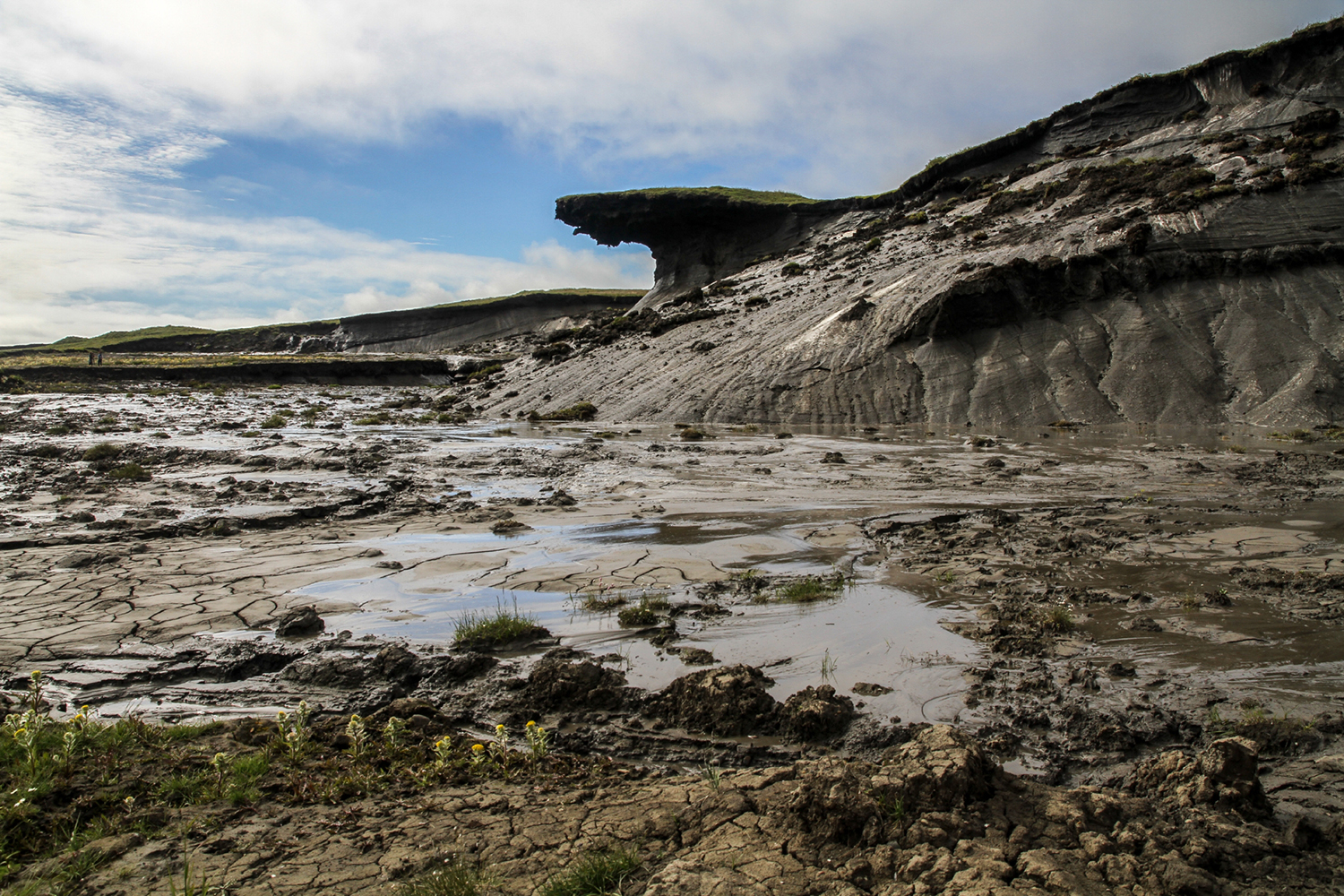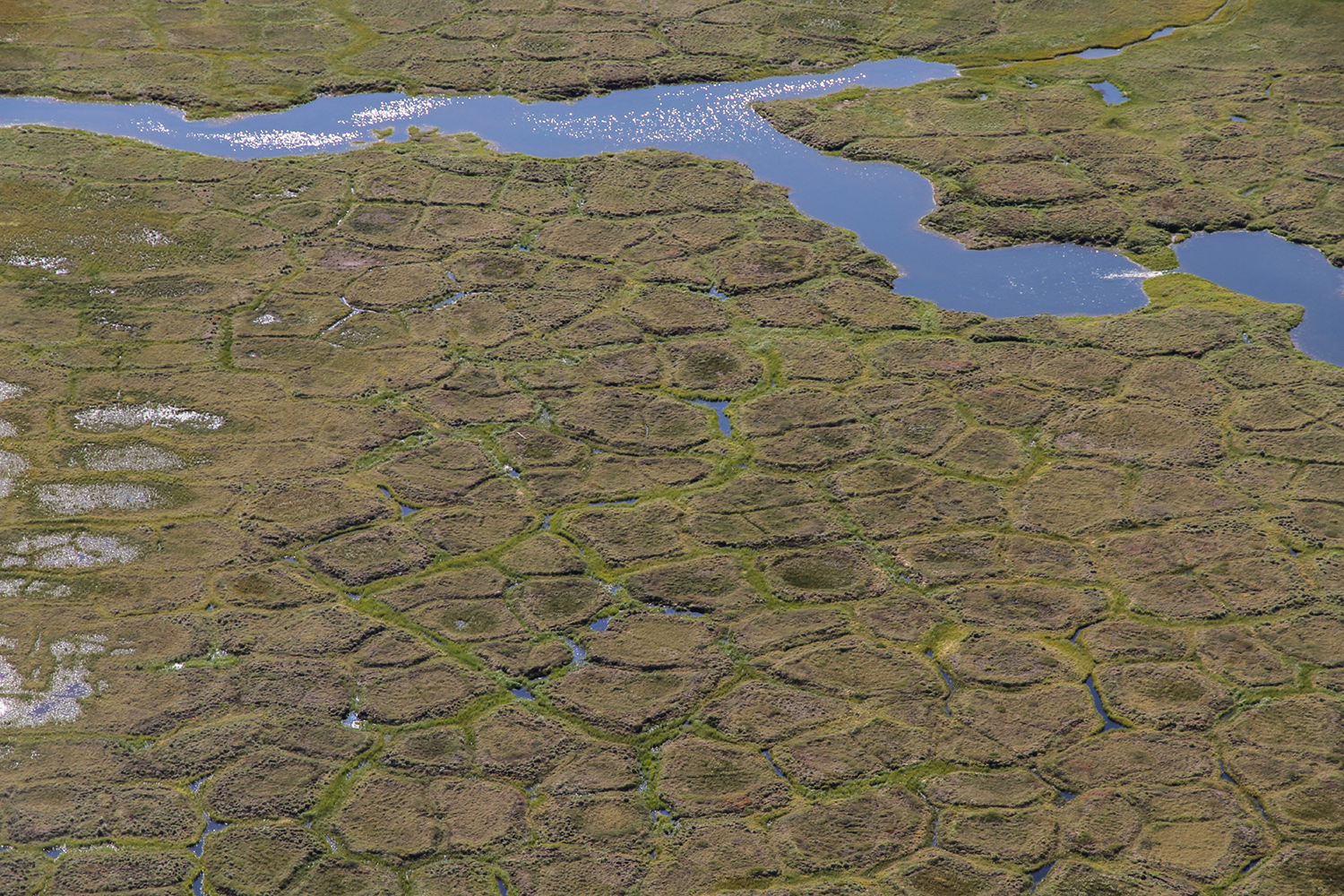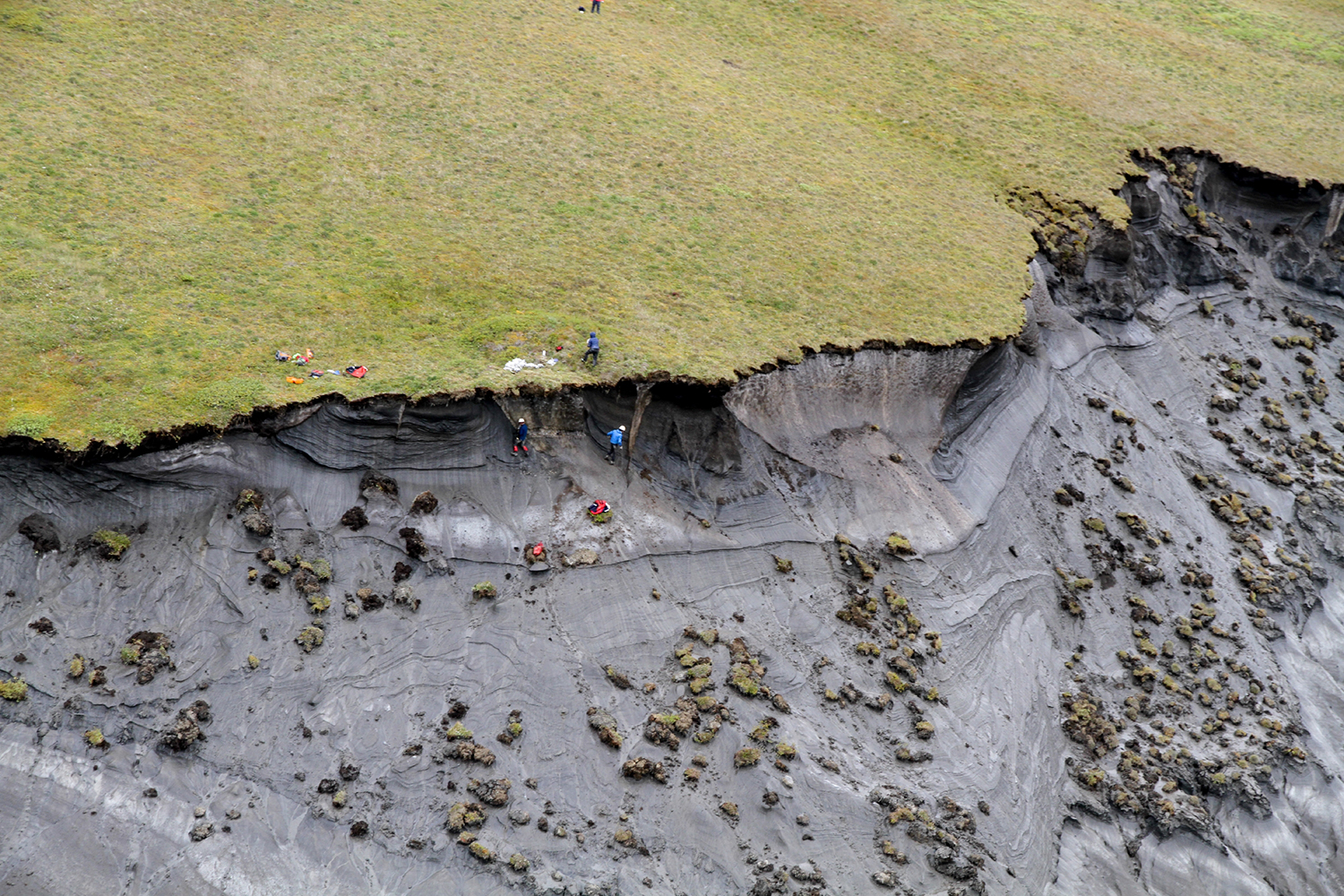What are the dangers of contaminated industrial sites in permafrost? Research team investigates environmental risks of drilling mud pits in Canada's Mackenzie Delta
Thousands of sites in Arctic permafrost regions contain industrial waste, some of it highly toxic. They threaten ecosystems and local populations as the permafrost thaws deeper and becomes unstable due to massive Arctic warming. In August, researchers from the Alfred Wegener Institute and Technische Universität Braunschweig, together with other national and international partners, investigate mud pits in the Mackenzie Delta, where residues from oil and gas exploration are stored. The expedition is part of the joint project ‘ThinIce’ (Thawing industrial legacies in the Arctic – a threat to permafrost ecosystems), which is funded by the German Federal Ministry of Education and Research with 1.9 million euros. The aim of the project is to assess the risk of the contaminated sites spreading and the potential environmental consequences, and to develop strategies to minimise the risk.

Coastal landscape marked by erosion with meltwater ponds on Herschel Island, Canada. Photo credits: Alfred Wegener Institute/Jaroslav Obu
Permanently frozen and in some places several hundred metres thick: permafrost soils, which only thaw superficially in summer, have long been considered not only a stable foundation for houses or industrial infrastructure, but also an insurmountable barrier for solid and liquid substances. In recent decades, the permafrost of the Arctic has been the site of careless dumping of industrial waste in pits, heaps or enclosed lakes, ranging from heavy metal-laden mining waste to toxic drilling muds and radioactive waste. However, climate change, which is occurring in the High North at a rate two to four times faster than the global average, is causing the ground to thaw deeper and deeper: It becomes unstable and more permeable. As a result, contaminated sites could spread into the environment, contaminating fragile ecosystems that are also the basis of many people’s livelihoods.

Polygonal permafrost and surface waters on Herschel Island, Yukon, Canada. Photo credits: Alfred Wegener Institute/Jaroslav Obu
At the beginning of August, an expedition team led by the Alfred Wegener Institute, Helmholtz Centre for Polar and Marine Research (AWI) travelled to the Mackenzie Delta in northwestern Canada – an area that has warmed by 0.3 degrees Celsius per decade since 1940. There, the researchers plan to investigate the dangers posed by more than 200 drilling mud pits. TU Braunschweig, Leibniz Universität Hannover and RWTH Aachen University are also involved in the ‘ThinIce’ research under the leadership of the Alfred Wegener Institute. The research team is working closely with Canadian scientists, regional authorities and the provincial government of the Inuvialuit communities.
Effects of climate change
“Here in Inuvik, north of the Arctic Circle, we were greeted by a new August temperature record of 35 degrees Celsius, with the highest temperatures only reached in the evening hours. I hadn’t expected this, but the Arctic is new territory for me too,” says Professor Antje Schwalb from the Institute of Geosystems and Bioindication at TU Braunschweig. She is joining the expedition with PhD student Emma Cameron. Their sub-project focuses on the effects of climate change and potential drilling fluid spills on local aquatic ecosystems. The researchers aim to determine the regional extent of these changes, identify highly threatened species and identify particularly vulnerable areas. To do this, they are analysing water and sediment samples. They are using organisms such as chironomids, diatoms, ostracods and thecamoebae, whose fossil remains have been preserved in the sediments, as bioindicators. The aim of these studies is to record climate and environmental changes over the last 50 years or so and to establish reference conditions for the waters.

Scientists conducting research on an eroding cliff on Herschel Island, Canada. Photo credits: Alfred Wegener Institute/Jaroslav Obu
On the one hand, this knowledge is relevant for the indigenous population in the Mackenzie Delta, as many of the contaminated sites are located near settlements or in hunting and fishing areas. On the other hand, knowledge about the release of toxic substances from contaminated permafrost soils could also help in the search for solutions to the problem of contaminated sites in other regions of the Arctic. “The Inuvialuit have been very open with us. They are very interested in an independent assessment of the hazard potential,” says Professor Schwalb.
The results of the project will serve as a basis for developing strategies with local partners to minimise the risk of contaminated drilling fluids spilling.
